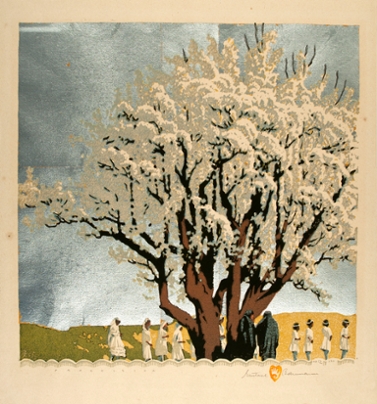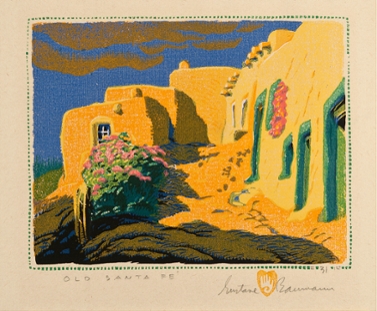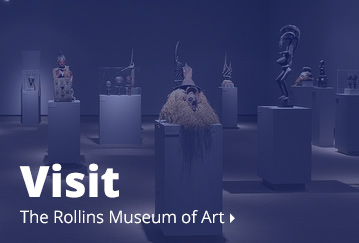The Prints of Gustave Baumann
Organized by the New Mexico Museum of Art, The Prints of Gustave Baumann centered around the artist's printmaking process. This exhibition included a series of prints and opaque watercolor studies that illustrated Baumann's mastery of the woodcut printmaking method; a sequence of blocks the artist carved and used to produce the print Spring Blossoms; and a series of seldom seen color woodcut prints depicting the rugged coast and mammoth trees of Northern California that round out the exhibition.
Born in Magdeburg, Germany in 1881, Gustave Baumann immigrated to the United States with his family in 1891 where they established a home in Chicago. At age sixteen, shortly after his father left the family, Baumann became an apprentice at a commercial print studio and began taking evening classes in drawing and design at the Art Institute of Chicago. By 1903, the artist had established his own commercial art studio and, in 1905, he returned to Germany to study for a year at Munich's Kunstgewerbe Schule (School of Arts and Crafts). While there, Baumann surveyed wood carving and the graphic arts, in particular the art of relief printmaking from Hans Neumann and Maxamilian Dasio. Returning from his studies, Baumann resumed his work in Chicago and in Brown County, Indiana, where he perfected his woodcut technique.
The 1915 Panama-Pacific International Exhibition in San Francisco included a showing of artists' prints, where Baumann received his first significant national recognition by winning a gold medal for his color woodcut prints. With the encouragement of artist Walter Ufer, Gustave Baumann spent the summer of 1918 in Taos, New Mexico. On route back to the East Coast at the end of that season, Baumann stopped in Santa Fe. While there, the New Mexico Museum of Fine Arts curator at that time, Paul Walter, arranged for living expenses and studio space for Baumann, located in the newly opened art museum. Thus began the artist's enchantment with New Mexico, and Santa Fe in particular.
Gustave Baumann became an integral part of the Santa Fe arts community, living there until his death in 1971. It is Baumann's timeless images depicting Southwestern landscapes and regional traditions of New Mexico that are his best known.


